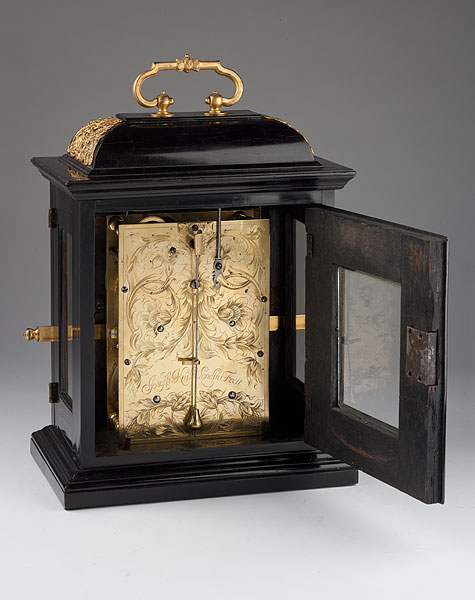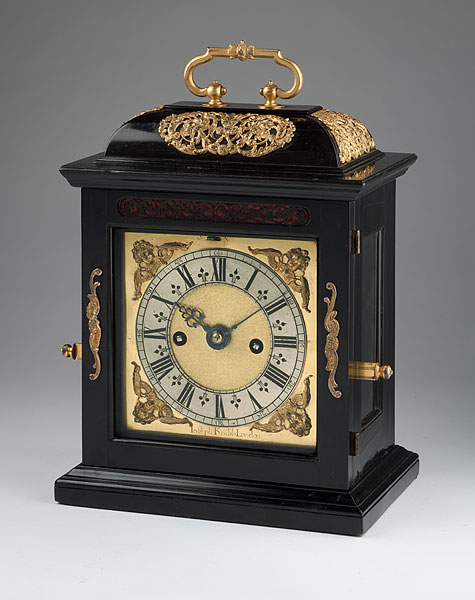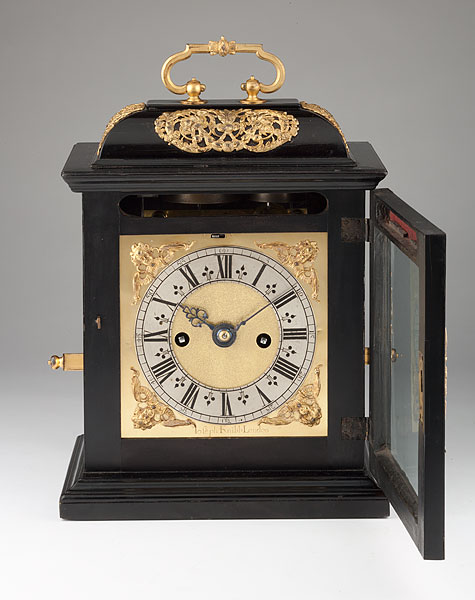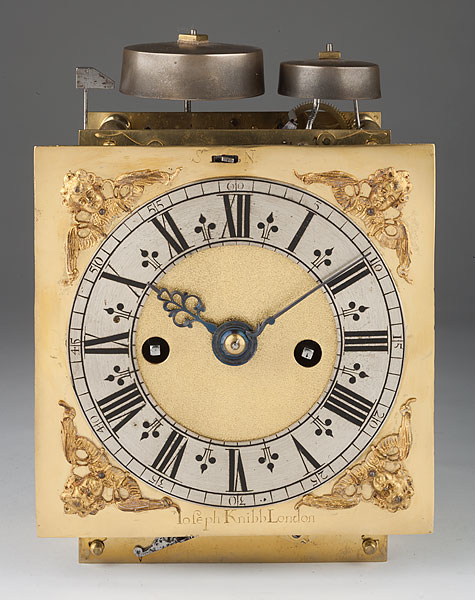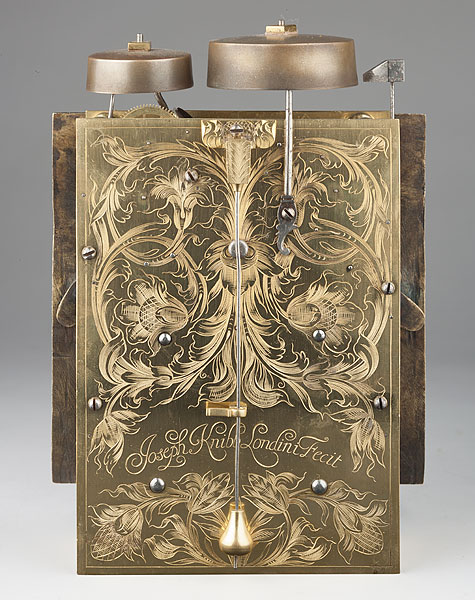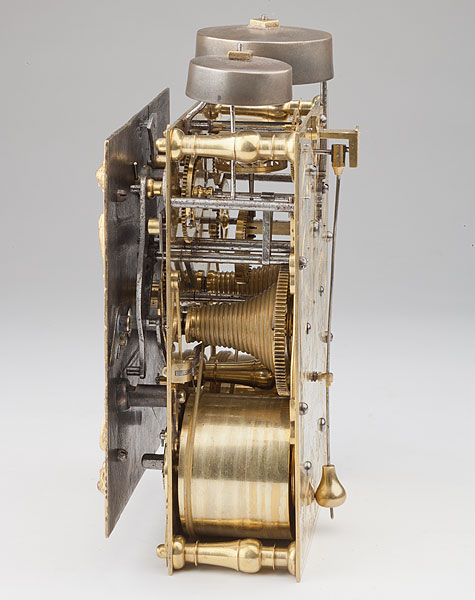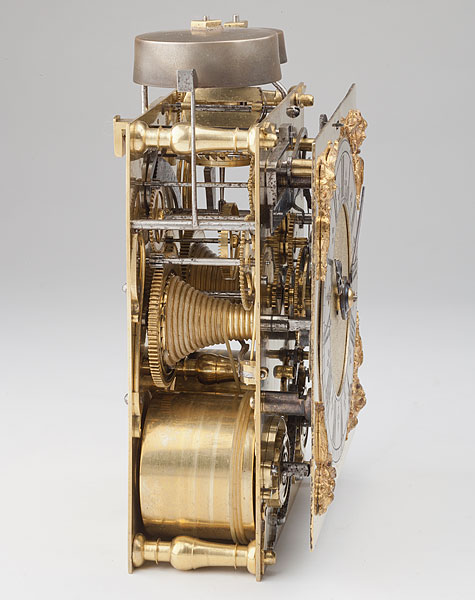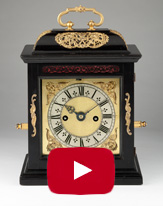[javascript protected email address]
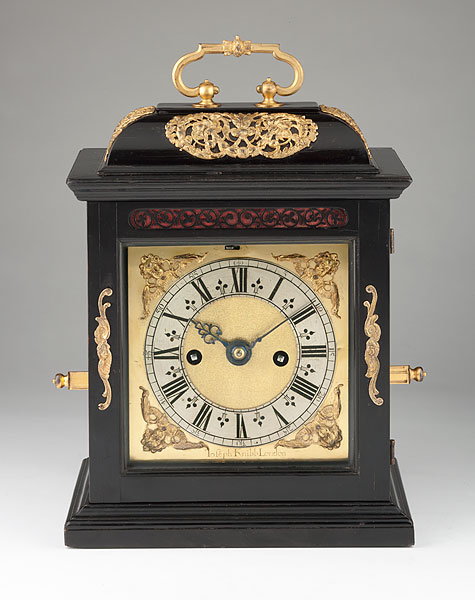
Joseph Knibb, London
Circa 1685
Sold
11¾ inches high
A fine ebony and gilt-metal mounted striking table clock with push repeat. CASE The domed top is applied with foliate cast gilt-metal mounts and surmounted by a typical foliate-tied lacquered brass handle. The sides of the case are glazed and the push repeat bar extends to both sides. The front door has a delicate foliate-pierced sound fret in the top rail and vertical winged cherub escutcheons to the stiles. The base of the case has a delicate convex moulding and sits flat-the-table in Knibb’s manner (without feet). DIAL The 6 inch square gilt-brass dial is signed Joseph Knibb London in his typical script at the base beneath a silvered chapter ring with Roman and Arabic numerals. The blued steel hands are delicately pierced and sculpted and the centre of the dial is matted. Each corner of the dial is applied with a finely cast and chased winged cherub spandrel. The dial feet are secured to the inside of the front plate by means of brass latches. MOVEMENT The brass movement plates are thin and delicate and held together by five ring-turned tulip pillars which are latch-secured at the front plate. The twin fusees and spring barrels have gut lines, the going train has a verge escapement with short bob pendulum which pivots on a knife-edge at the top of the backplate. The strike train operates on a rack system planted behind the dial on the front plate and the hours are struck on a single bell that has a clear note above the plates. The quarter repeating repeat system operates via a single lacquered brass bar which crosses behind the dial. It extends out to each side so that the time may be sounded, at will, by pushing the repeat bar from either side. The quarters are sounded on a small, pork pie bell and the hours on the larger hour bell. The backplate is beautifully engraved with scrolling foliage and tulip heads and it is signed in Knibb’s typical manner Joseph Knibb Londini Fecit. Born in 1640, Joseph Knibb was apprenticed to his cousin Samuel circa 1655. At the end of his apprenticeship in 1662 he moved to Oxford, whilst Samuel moved to London. Trading in Oxford proved difficult for Joseph and it was not until 1668, upon payment of a fine, that he was allowed to do so unhindered. In 1670 Samuel died and Joseph moved to London, presumably to take over his workshop. Joseph became a Free Brother in the Clockmakers' Company that year. His first premises were at the Dial in Fleet Street and in 1693 he moved to the Clock Dial near Charing Cross. He became a Steward in the Company in 1684 and Assistant in 1689. The number of clocks still extant suggest that his must have been one of the busiest workshops in London. He sold the business in 1697 and retired to Hanslop in Buckinghamshire, continuing to make some clocks but on a much smaller scale. He died in 1711.

